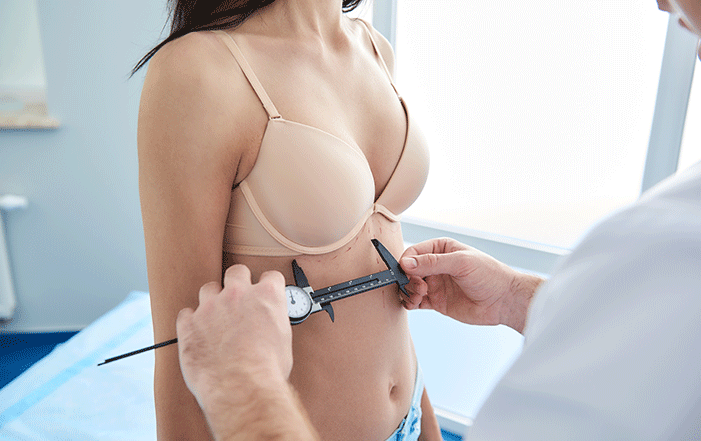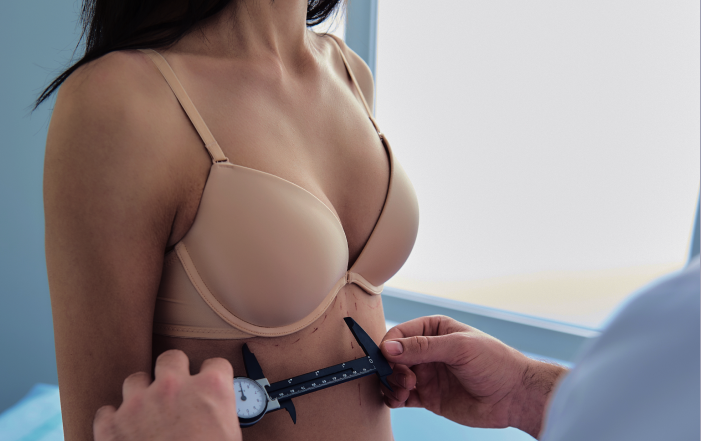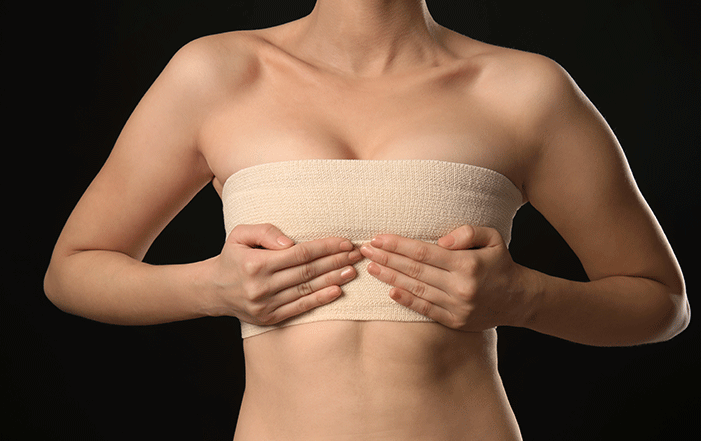Breast Reduction
Breast Reduction in Singapore
Overly large breasts can cause more than just cosmetic concerns—they can lead to physical discomfort, posture issues, skin irritation, and emotional distress. For many women, breast reduction surgery offers life-changing relief by reducing the size and weight of the breasts to achieve a more balanced, comfortable, and proportionate figure. Breast reduction is not only about aesthetics—it is often performed to address medical issues caused by large, heavy breasts.
Medically Reviewed by Dr Colin Tham
Consultant Plastic & Reconstructive Surgeon
MB ChB (Aberdeen), FRCS (Ireland), FAMS

What Is Breast Reduction Surgery?
Breast reduction surgery, or reduction mammoplasty, is a procedure that removes excess breast tissue, fat, and skin to reshape and resize the breasts. The goal is to achieve smaller, lighter, and firmer breasts that are more proportionate to the patient's body.
In addition to reducing breast volume, the procedure typically involves lifting the breasts and repositioning the nipples and areolas to a more youthful, natural height. The result is not only improved body contour but also relief from symptoms such as neck and back pain, shoulder grooves from bra straps, and difficulty participating in physical activities.
When Is Breast Reduction Needed?
Breast reduction is often needed when the size and weight of the breasts interfere with daily life or cause physical and emotional discomfort. Common reasons for undergoing the procedure include:
- Chronic neck, shoulder, or back pain
- Skin irritation or rashes under the breast fold
- Posture problems or spinal discomfort
- Indentations from bra straps
- Difficulty finding well-fitting clothing or bras
- Limitations in physical activity or exercise
- Self-consciousness or emotional distress related to breast size
For many women, these issues persist despite weight management, supportive garments, or physical therapy. Breast reduction can offer a long-term solution by addressing the root cause, which is the excess breast tissue itself.
Who Is a Suitable Candidate?
You may be a good candidate for breast reduction if:
Candidates should ideally:
- Your breasts are disproportionately large and cause discomfort
- You are in good overall health and have a stable weight
- You are not pregnant or breastfeeding
- Your breast growth has stabilized
- You have realistic expectations about the outcome
- You are a non-smoker or willing to quit prior to surgery
During a consultation, your surgeon will evaluate your health, breast anatomy, and goals to determine whether breast reduction is right for you and what technique would be most suitable.
What Are the Types of Breast Reduction Surgery?
There are several surgical techniques used for breast reduction, and the best approach depends on breast size, shape, degree of sagging, and individual anatomy. Common methods include:
Anchor (Inverted-T) Technique
This is the most commonly used technique, especially for larger reductions. It involves three incisions: around the areola, vertically down to the breast crease, and along the crease itself. This allows for significant tissue removal and reshaping.
Vertical (Lollipop) Technique
This technique involves two incisions: around the areola and vertically down to the breast fold. It's ideal for moderate reductions and results in less scarring than the anchor method.
Periareolar (Donut) Technique
In this method, the incision is made only around the areola. It's suitable for smaller reductions and patients with mild sagging. It results in minimal scarring but is limited in how much tissue can be removed.
Liposuction-Only Reduction
For patients with good skin elasticity and minimal sagging, breast reduction may be performed using liposuction alone. This method results in minimal scarring and shorter recovery time but is generally suitable only for small to moderate reductions.
What to Expect Before, During, and After a Breast Reduction

Before Surgery
You will first have a consultation where you'll discuss your symptoms, goals, and concerns. Your plastic surgeon will examine your breasts, evaluate your health, and determine the most appropriate surgical plan. You may be asked to:
- Undergo a mammogram or other medical tests
- Stop smoking several weeks before surgery
- Avoid blood-thinning medications or supplements
- Arrange for someone to assist you post-surgery
Clear instructions will be provided to prepare for the day of surgery, including fasting, bathing, and what to bring to the hospital.

During Surgery
Breast reduction is typically performed under general anaesthesia and takes 2 to 4 hours, depending on the complexity. Once the incisions are made, the surgeon removes excess tissue, fat, and skin. The remaining breast tissue is reshaped, and the nipple and areola are repositioned for a lifted, more natural look.
If necessary, the size of the areola can be reduced, and drains may be placed to help prevent fluid buildup. Incisions are then closed with sutures, and the breasts are wrapped in a surgical dressing or compression garment.

After Surgery
You will be monitored in a recovery area before being discharged, usually on the same day. Most patients return home with bandages and a special bra to support the healing breasts. Pain, swelling, and bruising are normal in the first few days and can be managed with prescribed medications.
Post-surgery instructions will include:
- Caring for incisions and drains, if present
- Wearing a supportive bra at all times
- Avoiding strenuous activity or heavy lifting
- Attending follow-up appointments
Recovering from Breast Reduction
Recovery from breast reduction is gradual and varies from person to person. Most patients can return to light activities or work within 1 to 2 weeks, but full recovery may take several weeks to months. You may experience swelling, bruising, and changes in breast or nipple sensation during the healing process.
Final results—including the breast shape, symmetry, and scar appearance—continue to improve over time, often taking several months to settle completely. Scars will fade gradually but may take up to a year to fully mature.
To ensure a smooth recovery, it's important to:
- Follow all post-op care instructions
- Avoid underwire bras until cleared by your surgeon
- Sleep on your back with elevated support
- Maintain a stable weight and healthy lifestyle
Most patients experience significant relief from physical symptoms almost immediately and feel more confident and comfortable in their bodies.
Frequently Asked Questions

Breast Reduction Surgeon in Singapore
Dr Colin Tham
Consultant Plastic & Cosmetic Surgeon MB ChB (Aberdeen), FRCS (Ireland), FAMS
Dr Colin Tham is an experienced plastic surgeon skilled in performing breast reduction surgeries. He is accredited by the Ministry of Health in Singapore and has over 20 years of experience in the field. Dr Tham received extensive plastic surgery training in Scotland, Taiwan, and Singapore; and is committed to providing beautiful and natural-looking outcomes for all his patients.
